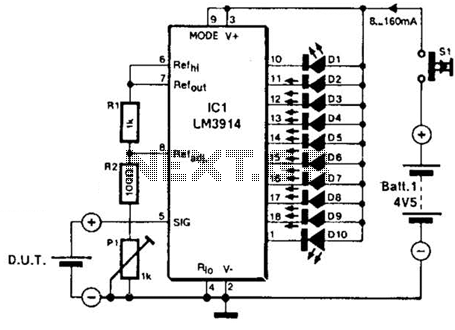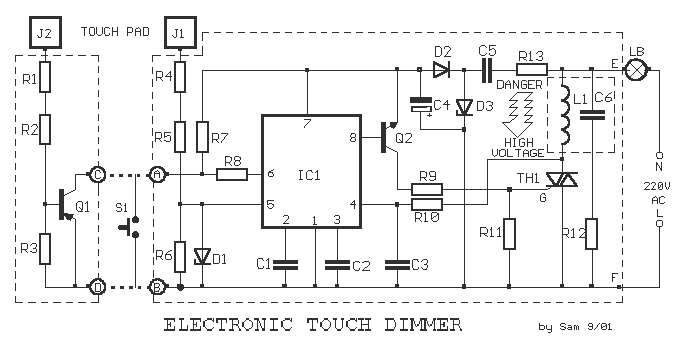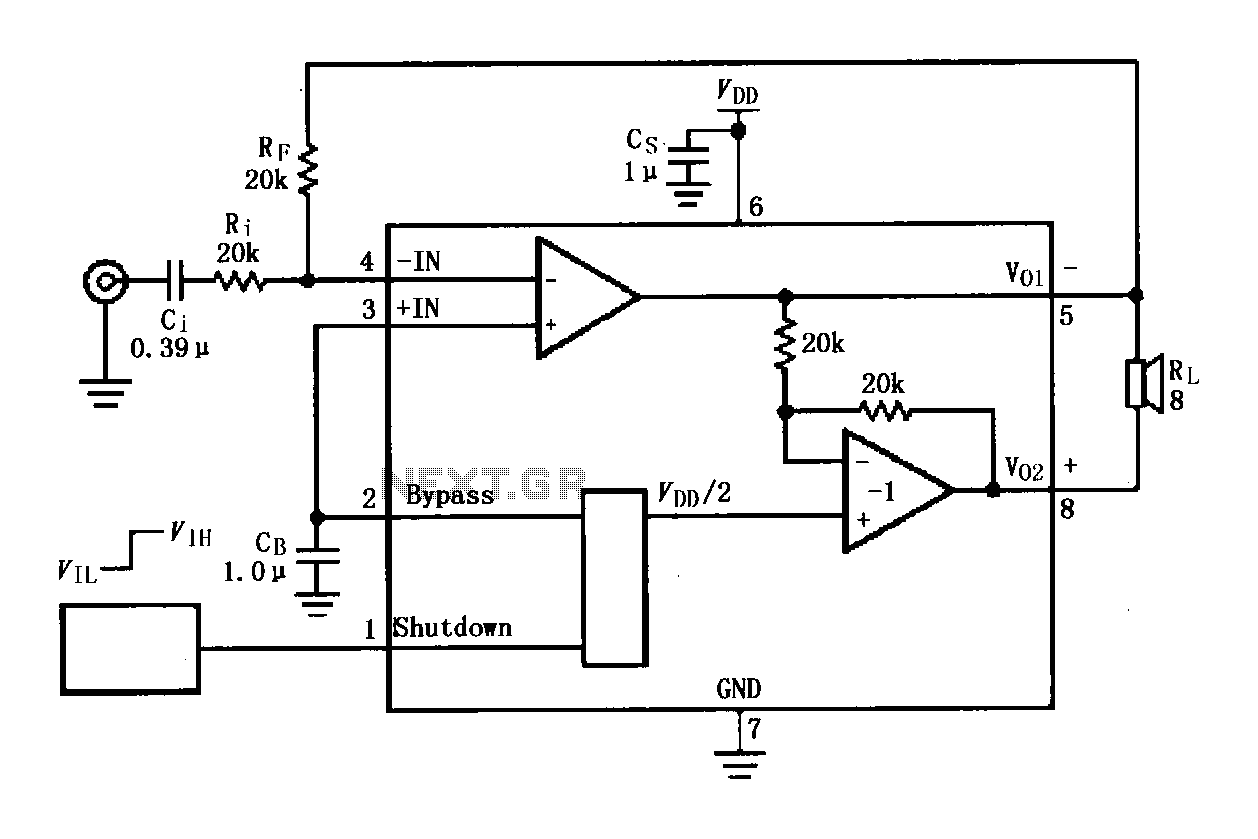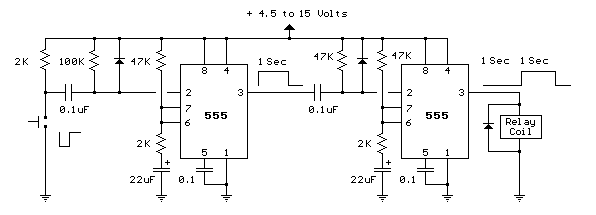
DMX PC Keyboard Interface circuit
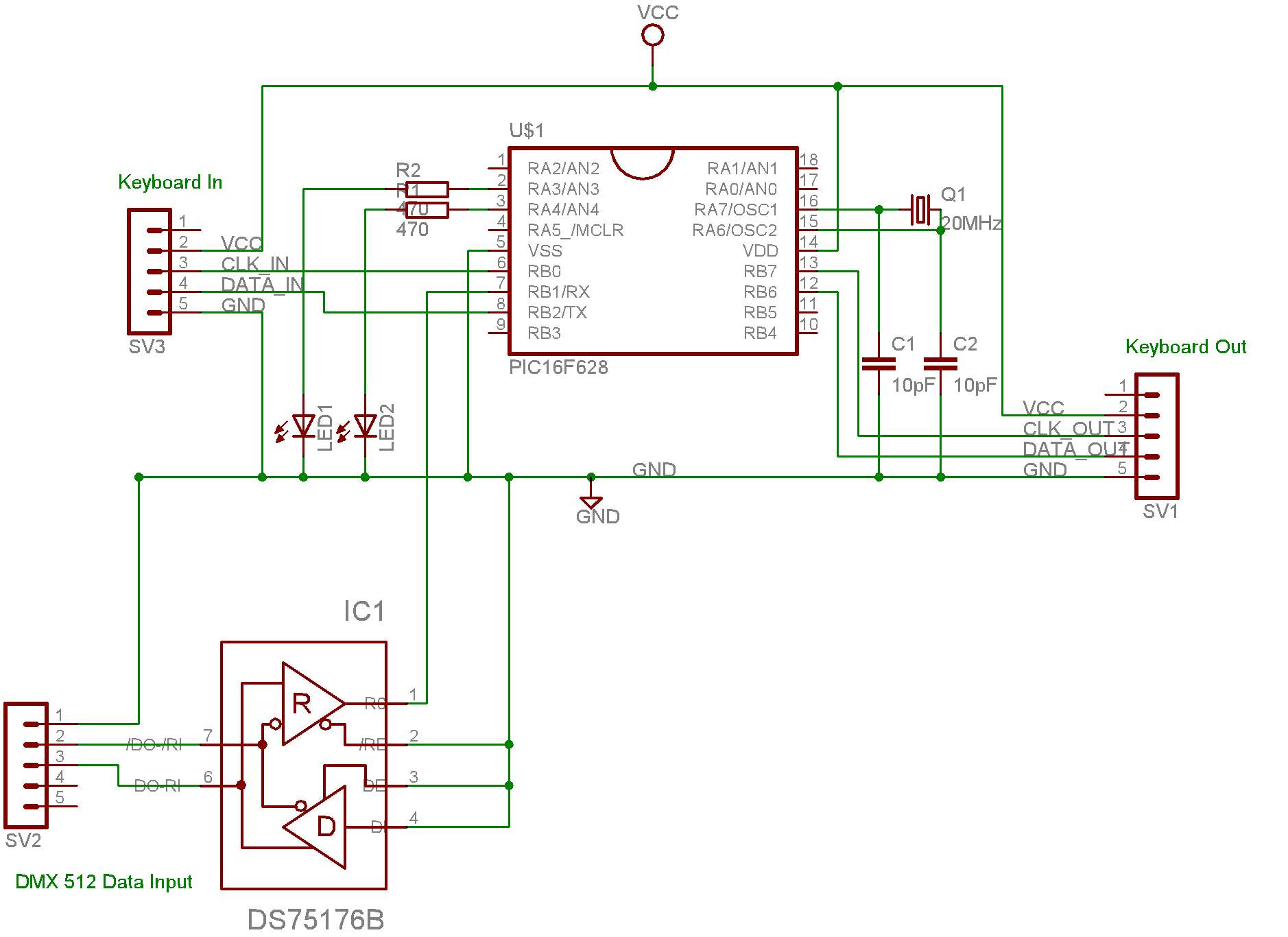
This system is designed for use with a PC connected to video projectors, enabling a lighting controller to manage a presentation displayed on the video screen. The PC used for the presentation is situated in a different location from the lighting control. The hardware required for this project is relatively straightforward, as outlined in the circuit. DMX data is converted using the 75176 Bus Transceiver, which interfaces with the USART receiver in the PIC microcontroller at Pin 7. Additionally, there is an interrupt routine within the keyboard receiver that decodes the keys pressed on the keyboard, allowing the keyboard to send the corresponding key codes from the unit.
The circuit design facilitates seamless communication between the PC, lighting controller, and video projector. The use of the 75176 Bus Transceiver is critical for converting DMX data, which is a standard protocol in lighting control systems. This transceiver ensures reliable data transmission over the differential bus, minimizing the risk of data corruption due to electrical noise.
The PIC microcontroller plays a vital role in this setup, particularly through its USART (Universal Synchronous Asynchronous Receiver Transmitter) capabilities. By connecting the transceiver to Pin 7 of the PIC, the system can receive DMX data effectively. The USART allows for asynchronous communication, which is particularly useful in environments where the lighting control system may need to respond to real-time inputs without delays.
Furthermore, the keyboard interface enhances user interaction with the system. The interrupt routine in the keyboard receiver is designed to monitor key presses, enabling the lighting controller to respond to user inputs instantaneously. Each key press is decoded into a specific code that the microcontroller can interpret, allowing for dynamic control of the presentation based on user commands.
Overall, this electronic schematic integrates various components to create a robust system for controlling presentations and lighting in environments where spatial separation between the PC and the lighting control is necessary. The combination of DMX data conversion, USART communication, and keyboard input handling contributes to a flexible and efficient solution for multimedia presentations.To be used with PC connected to video projectors, where the lighting controller may require control of a presentation on the video screen but the PC for the presentation is located in a different location to lighting control. The Hardware required for this project is quite simple see Circuit. The DMX data is converted inthe 75176 Bus Transceiver connecting to the USART receiver in the PIC on Pin 7.
Also in the interrupt routine in the keyboard receiver which decodes keys typed on the keyboard and the keyboard send code which send key pressed from the unit. 🔗 External reference
The circuit design facilitates seamless communication between the PC, lighting controller, and video projector. The use of the 75176 Bus Transceiver is critical for converting DMX data, which is a standard protocol in lighting control systems. This transceiver ensures reliable data transmission over the differential bus, minimizing the risk of data corruption due to electrical noise.
The PIC microcontroller plays a vital role in this setup, particularly through its USART (Universal Synchronous Asynchronous Receiver Transmitter) capabilities. By connecting the transceiver to Pin 7 of the PIC, the system can receive DMX data effectively. The USART allows for asynchronous communication, which is particularly useful in environments where the lighting control system may need to respond to real-time inputs without delays.
Furthermore, the keyboard interface enhances user interaction with the system. The interrupt routine in the keyboard receiver is designed to monitor key presses, enabling the lighting controller to respond to user inputs instantaneously. Each key press is decoded into a specific code that the microcontroller can interpret, allowing for dynamic control of the presentation based on user commands.
Overall, this electronic schematic integrates various components to create a robust system for controlling presentations and lighting in environments where spatial separation between the PC and the lighting control is necessary. The combination of DMX data conversion, USART communication, and keyboard input handling contributes to a flexible and efficient solution for multimedia presentations.To be used with PC connected to video projectors, where the lighting controller may require control of a presentation on the video screen but the PC for the presentation is located in a different location to lighting control. The Hardware required for this project is quite simple see Circuit. The DMX data is converted inthe 75176 Bus Transceiver connecting to the USART receiver in the PIC on Pin 7.
Also in the interrupt routine in the keyboard receiver which decodes keys typed on the keyboard and the keyboard send code which send key pressed from the unit. 🔗 External reference
